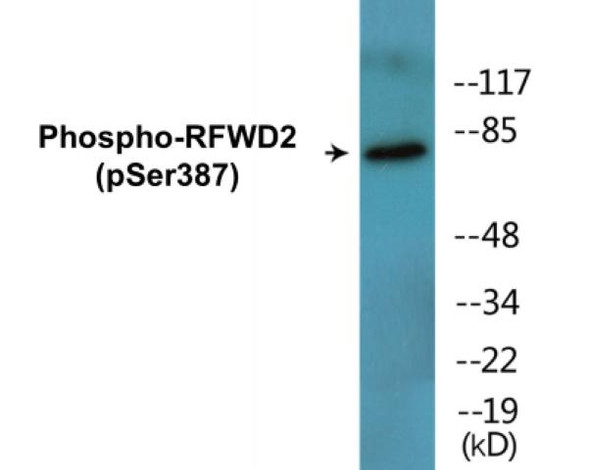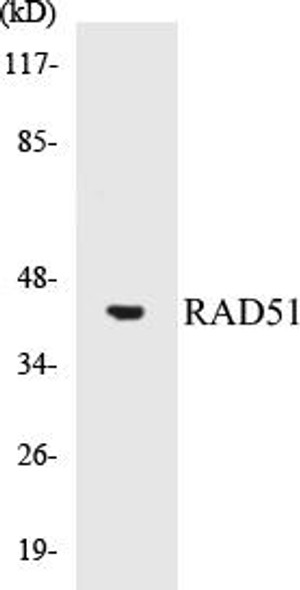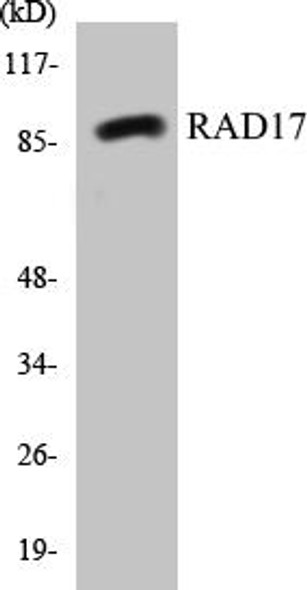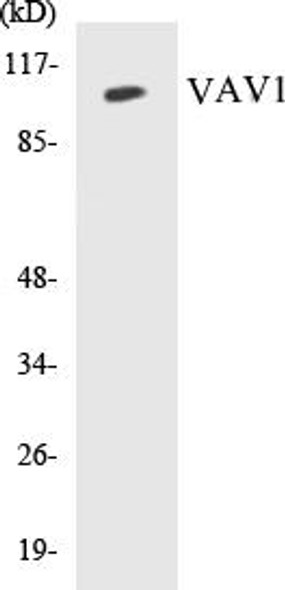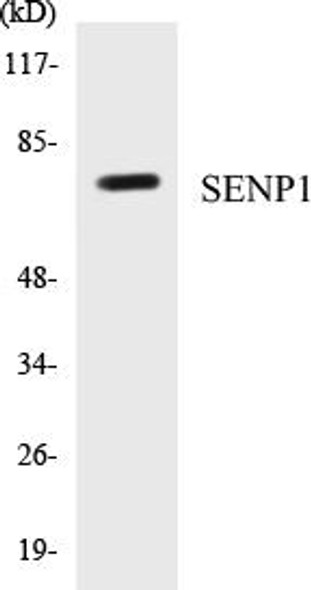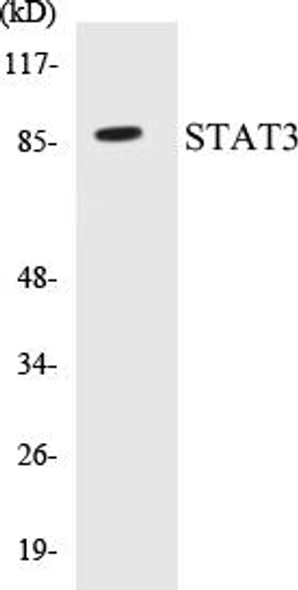RFWD2 Colorimetric Cell-Based ELISA Kit
- SKU:
- CBCAB00846
- Product Type:
- ELISA Kit
- ELISA Type:
- Cell Based
- Research Area:
- Signal Transduction
- Reactivity:
- Human
- Mouse
- Detection Method:
- Colorimetric
Description
RFWD2 Colorimetric Cell-Based ELISA Kit
The RFWD2 Colorimetric Cell-Based ELISA Kit is a highly sensitive and specific assay designed for the accurate detection of RFWD2 protein levels in cell culture samples. RFWD2 is a key player in the regulation of DNA damage response and repair pathways, making it a valuable biomarker for studying the mechanisms of cancer development and progression.This kit offers reliable and reproducible results, allowing researchers to analyze RFWD2 expression levels in a range of experimental conditions with confidence.
By understanding the role of RFWD2 in cellular processes, researchers can gain insight into the molecular mechanisms underlying cancer development and potentially identify new therapeutic targets.Overall, the RFWD2 Colorimetric Cell-Based ELISA Kit is an essential tool for cancer research and drug development, providing valuable data on RFWD2 expression levels that can drive forward scientific discovery and innovation in the field of oncology.
| Product Name: | RFWD2 Colorimetric Cell-Based ELISA |
| Product Code: | CBCAB00846 |
| ELISA Type: | Cell-Based |
| Target: | RFWD2 |
| Reactivity: | Human, Mouse |
| Dynamic Range: | > 5000 Cells |
| Detection Method: | Colorimetric 450 nmStorage/Stability:4°C/6 Months |
| Format: | 96-Well Microplate |
The RFWD2 Colorimetric Cell-Based ELISA Kit is a convenient, lysate-free, high throughput and sensitive assay kit that can detect RFWD2 protein expression profile in cells. The kit can be used for measuring the relative amounts of RFWD2 in cultured cells as well as screening for the effects that various treatments, inhibitors (ie siRNA or chemicals), or activators have on RFWD2.
Qualitative determination of RFWD2 concentration is achieved by an indirect ELISA format. In essence, RFWD2 is captured by RFWD2-specific primary antibodies while the HRP-conjugated secondary antibodies bind the Fc region of the primary antibody. Through this binding, the HRP enzyme conjugated to the secondary antibody can catalyze a colorimetric reaction upon substrate addition. Due to the qualitative nature of the Cell-Based ELISA, multiple normalization methods are needed:
| 1. | A monoclonal antibody specific for human GAPDH is included to serve as an internal positive control in normalizing the target absorbance values. |
| 2. | Following the colorimetric measurement of HRP activity via substrate addition, the Crystal Violet whole-cell staining method may be used to determine cell density. After staining, the results can be analysed by normalizing the absorbance values to cell amounts, by which the plating difference can be adjusted. |
| Database Information: | Gene ID: 64326, UniProt ID: Q8NHY2, OMIM: 608067, Unigene: Hs.523744 |
| Gene Symbol: | RFWD2 |
| Sub Type: | None |
| UniProt Protein Function: | COP1: E3 ubiquitin-protein ligase that mediates ubiquitination and subsequent proteasomal degradation of target proteins. E3 ubiquitin ligases accept ubiquitin from an E2 ubiquitin- conjugating enzyme in the form of a thioester and then directly transfers the ubiquitin to targeted substrates. Involved in JUN ubiquitination and degradation. Directly involved in p53 (TP53) ubiquitination and degradation, thereby abolishing p53-dependent transcription and apoptosis. Ubiquitinates p53 independently of MDM2 or RCHY1. Probably mediates E3 ubiquitin ligase activity by functioning as the essential RING domain subunit of larger E3 complexes. In contrast, it does not constitute the catalytic RING subunit in the DCX DET1-COP1 complex that negatively regulates JUN, the ubiquitin ligase activity being mediated by RBX1. Homodimer. Homodimerization is mediated by the coiled coil domain. Component of the DCX DET1-COP1 ubiquitin ligase complex at least composed of RBX1, DET1, DDB1, CUL4A and COP1. Isoform 2 does not interact with CUL4A but still binds to RBX1, suggesting that the interaction may be mediated by another culllin protein. Isoform 1 and isoform 2 interact with CUL5 but not with CUL1, CUL2 not CUL3. Interacts with bZIP transcription factors JUN, JUNB and JUND but not with FOS, ATF2 nor XBP1. Interacts with p53 (TP53). By p53/TP53. Ubiquitously expressed at low level. Expressed at higher level in testis, placenta, skeletal muscle and heart. Belongs to the COP1 family. 3 isoforms of the human protein are produced by alternative splicing. |
| UniProt Protein Details: | Protein type:Ubiquitin conjugating system; Ubiquitin ligase; Ligase; EC 6.3.2.19; EC 6.3.2.- Chromosomal Location of Human Ortholog: 1q25.1-q25.2 Cellular Component: centrosome; cytoplasm; cytosol; focal adhesion; Golgi membrane; nuclear speck; nucleoplasm Molecular Function:ligase activity; protein binding; zinc ion binding Biological Process: DNA damage response, signal transduction by p53 class mediator resulting in cell cycle arrest; positive regulation of proteasomal ubiquitin-dependent protein catabolic process; protein ubiquitination; response to ionizing radiation |
| UniProt Code: | Q8NHY2 |
| NCBI GenInfo Identifier: | 55976539 |
| NCBI Gene ID: | 64326 |
| NCBI Accession: | Q8NHY2.1 |
| UniProt Secondary Accession: | Q8NHY2,Q504W6, Q6H103, Q9H6L7, E9PKI0, X5D9B4, |
| UniProt Related Accession: | Q8NHY2 |
| Molecular Weight: | 14,914 Da |
| NCBI Full Name: | E3 ubiquitin-protein ligase RFWD2 |
| NCBI Synonym Full Names: | ring finger and WD repeat domain 2, E3 ubiquitin protein ligase |
| NCBI Official Symbol: | RFWD2 |
| NCBI Official Synonym Symbols: | COP1; RNF200 |
| NCBI Protein Information: | E3 ubiquitin-protein ligase RFWD2 |
| UniProt Protein Name: | E3 ubiquitin-protein ligase RFWD2 |
| UniProt Synonym Protein Names: | Constitutive photomorphogenesis protein 1 homolog; hCOP1; RING finger and WD repeat domain protein 2; RING finger protein 200 |
| Protein Family: | E3 ubiquitin-protein ligase |
| UniProt Gene Name: | RFWD2 |
| UniProt Entry Name: | RFWD2_HUMAN |
| Component | Quantity |
| 96-Well Cell Culture Clear-Bottom Microplate | 2 plates |
| 10X TBS | 24 mL |
| Quenching Buffer | 24 mL |
| Blocking Buffer | 50 mL |
| 15X Wash Buffer | 50 mL |
| Primary Antibody Diluent | 12 mL |
| 100x Anti-Phospho Target Antibody | 60 µL |
| 100x Anti-Target Antibody | 60 µL |
| Anti-GAPDH Antibody | 60 µL |
| HRP-Conjugated Anti-Rabbit IgG Antibody | 12 mL |
| HRP-Conjugated Anti-Mouse IgG Antibody | 12 mL |
| SDS Solution | 12 mL |
| Stop Solution | 24 mL |
| Ready-to-Use Substrate | 12 mL |
| Crystal Violet Solution | 12 mL |
| Adhesive Plate Seals | 2 seals |
The following materials and/or equipment are NOT provided in this kit but are necessary to successfully conduct the experiment:
- Microplate reader able to measure absorbance at 450 nm and/or 595 nm for Crystal Violet Cell Staining (Optional)
- Micropipettes with capability of measuring volumes ranging from 1 µL to 1 ml
- 37% formaldehyde (Sigma Cat# F-8775) or formaldehyde from other sources
- Squirt bottle, manifold dispenser, multichannel pipette reservoir or automated microplate washer
- Graph paper or computer software capable of generating or displaying logarithmic functions
- Absorbent papers or vacuum aspirator
- Test tubes or microfuge tubes capable of storing ≥1 ml
- Poly-L-Lysine (Sigma Cat# P4832 for suspension cells)
- Orbital shaker (optional)
- Deionized or sterile water
*Note: Protocols are specific to each batch/lot. For the correct instructions please follow the protocol included in your kit.
| Step | Procedure |
| 1. | Seed 200 µL of 20,000 adherent cells in culture medium in each well of a 96-well plate. The plates included in the kit are sterile and treated for cell culture. For suspension cells and loosely attached cells, coat the plates with 100 µL of 10 µg/ml Poly-L-Lysine (not included) to each well of a 96-well plate for 30 minutes at 37°C prior to adding cells. |
| 2. | Incubate the cells for overnight at 37°C, 5% CO2. |
| 3. | Treat the cells as desired. |
| 4. | Remove the cell culture medium and rinse with 200 µL of 1x TBS, twice. |
| 5. | Fix the cells by incubating with 100 µL of Fixing Solution for 20 minutes at room temperature. The 4% formaldehyde is used for adherent cells and 8% formaldehyde is used for suspension cells and loosely attached cells. |
| 6. | Remove the Fixing Solution and wash the plate 3 times with 200 µL 1x Wash Buffer for five minutes each time with gentle shaking on the orbital shaker. The plate can be stored at 4°C for a week. |
| 7. | Add 100 µL of Quenching Buffer and incubate for 20 minutes at room temperature. |
| 8. | Wash the plate 3 times with 1x Wash Buffer for 5 minutes each time. |
| 9. | Add 200 µL of Blocking Buffer and incubate for 1 hour at room temperature. |
| 10. | Wash 3 times with 200 µL of 1x Wash Buffer for 5 minutes each time. |
| 11. | Add 50 µL of 1x primary antibodies (Anti-RFWD2 Antibody and/or Anti-GAPDH Antibody) to the corresponding wells, cover with Parafilm and incubate for 16 hours (overnight) at 4°C. If the target expression is known to be high, incubate for 2 hours at room temperature. |
| 12. | Wash 3 times with 200 µL of 1x Wash Buffer for 5 minutes each time. |
| 13. | Add 50 µL of 1x secondary antibodies (HRP-Conjugated AntiRabbit IgG Antibody or HRP-Conjugated Anti-Mouse IgG Antibody) to corresponding wells and incubate for 1.5 hours at room temperature. |
| 14. | Wash 3 times with 200 µL of 1x Wash Buffer for 5 minutes each time. |
| 15. | Add 50 µL of Ready-to-Use Substrate to each well and incubate for 30 minutes at room temperature in the dark. |
| 16. | Add 50 µL of Stop Solution to each well and read OD at 450 nm immediately using the microplate reader. |
(Additional Crystal Violet staining may be performed if desired – details of this may be found in the kit technical manual.)


